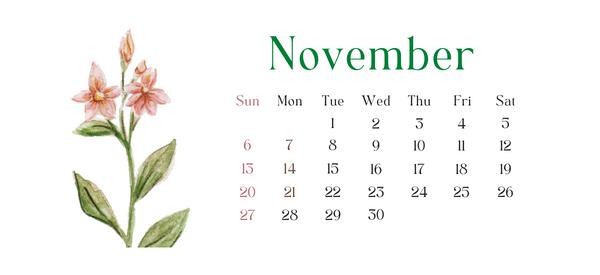
Foraging Calendar: What to Forage in November
It’s November and Thanksgiving is right around the corner for many Americans. Whether you are hosting or a guest, usually you bring a dish. Why not show off and teach others about foraging by bringing a freshly foraged dish? These are some delicious forageables that you can find this month.
The USDA Hardiness zone Map is an attempt to divide the country into zones that give us some idea whether certain plants can be grown in any given area. The primary piece of data used to delineate the zones is the average annual winter temperature experienced in that area. This could just be a list of forageables, but the temperature varies so much across the USA. The Lost Herbs wants this to be a list for every one of our readers, no matter the zone or region you live in.
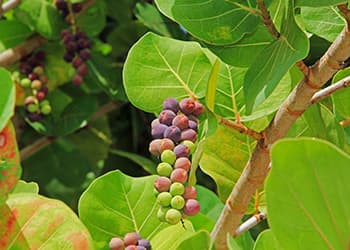 Sea Grape (Coccoloba uvifera) leaves are round, wide, and evergreen. The younger growth is red, but the foliage matures to bright green with red veins. The flowers are small and cream-colored, blooming in long clusters. The immature fruits resemble green grapes on the vine. The clusters deepen to a red or purple color as they ripen in the fall. Sea grapes can be used to make jams and can be eaten raw. The juice can be used to treat fevers. Sea Grapes grow in the hardiness zones 10-11 in the Southwest and Southeast regions of the USA.
Sea Grape (Coccoloba uvifera) leaves are round, wide, and evergreen. The younger growth is red, but the foliage matures to bright green with red veins. The flowers are small and cream-colored, blooming in long clusters. The immature fruits resemble green grapes on the vine. The clusters deepen to a red or purple color as they ripen in the fall. Sea grapes can be used to make jams and can be eaten raw. The juice can be used to treat fevers. Sea Grapes grow in the hardiness zones 10-11 in the Southwest and Southeast regions of the USA.
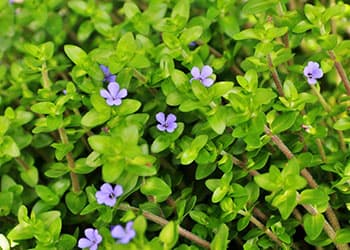 Lemon Bacopa (Bacopa caroliniana) leaves are small, nearly round, thick, fleshy, and succulent. The crushed leaves smell like limes and the taste is very similar to limes. When the species grows as an emergent plant, the stems are often covered with fine hairs and may appear velvety. The flowers are blue. Use them in your salad or as tea. It does have a look-alike that can be toxic that has white flowers, called Bacopa Monnieri. Lemon Bacopa grows in hardiness zones 6-11 in the Southeast regions of the U.S.A.
Lemon Bacopa (Bacopa caroliniana) leaves are small, nearly round, thick, fleshy, and succulent. The crushed leaves smell like limes and the taste is very similar to limes. When the species grows as an emergent plant, the stems are often covered with fine hairs and may appear velvety. The flowers are blue. Use them in your salad or as tea. It does have a look-alike that can be toxic that has white flowers, called Bacopa Monnieri. Lemon Bacopa grows in hardiness zones 6-11 in the Southeast regions of the U.S.A.
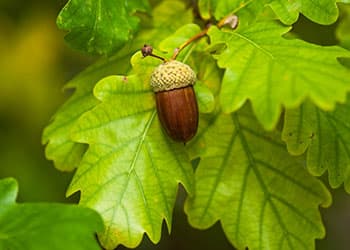 Acorns (Quercus) woody cups may be scaly, smooth, or hairy. Acorns are usually ball-shaped or oval, and some kinds have slight ridges on them. Mature acorns can be brown, red, or black. Acorns grow on Oak trees, look for bark that has deep fissures and ridges, giving it a scaly look. The bark color of oaks ranges from whitish-gray to dark, almost black. You can identify oak trees by their deeply lobed leaves with pointed or rounded tips. Acorns can be ground to make flour, which is used to make baked goods, such as bread or cookies. Acorns grow in hardiness zones 5-8 and across all U.S. regions.
Acorns (Quercus) woody cups may be scaly, smooth, or hairy. Acorns are usually ball-shaped or oval, and some kinds have slight ridges on them. Mature acorns can be brown, red, or black. Acorns grow on Oak trees, look for bark that has deep fissures and ridges, giving it a scaly look. The bark color of oaks ranges from whitish-gray to dark, almost black. You can identify oak trees by their deeply lobed leaves with pointed or rounded tips. Acorns can be ground to make flour, which is used to make baked goods, such as bread or cookies. Acorns grow in hardiness zones 5-8 and across all U.S. regions.
⇒ 10 Edible Plants People Confuse With Their Poisonous Look-Alikes (Video)
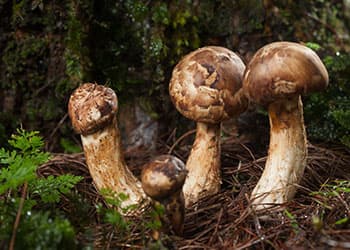 Matsutake (Tricholoma matsutake) grow under multiple kinds of pine trees. Matsutake mushrooms have very sturdy thick stems, which are almost always hidden under the soil. The colors of the stem and cap range from a clear white to flaky brown. Matsutake mushrooms can also be incorporated into sauces, sauteed into omelets, cooked into pasta, risotto, or made into Matsutake gohan. Matsutake grows in the Northwest regions of the U.S.
Matsutake (Tricholoma matsutake) grow under multiple kinds of pine trees. Matsutake mushrooms have very sturdy thick stems, which are almost always hidden under the soil. The colors of the stem and cap range from a clear white to flaky brown. Matsutake mushrooms can also be incorporated into sauces, sauteed into omelets, cooked into pasta, risotto, or made into Matsutake gohan. Matsutake grows in the Northwest regions of the U.S.
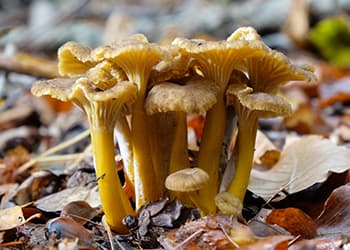 Winter Chanterelles (Craterellus tubaeformis) has a bright yellow/orange stem which gives the common name of yellow-leg. The beige gills are also distinctive by being vein-like gills. They can be found under spruce, pine, western hemlock, beech or oak on particularly moist slopes. Winter Chanterelles are usually enjoyed fried or in soups. Winter Chanterelles grow in the Northwest region of the U.S.
Winter Chanterelles (Craterellus tubaeformis) has a bright yellow/orange stem which gives the common name of yellow-leg. The beige gills are also distinctive by being vein-like gills. They can be found under spruce, pine, western hemlock, beech or oak on particularly moist slopes. Winter Chanterelles are usually enjoyed fried or in soups. Winter Chanterelles grow in the Northwest region of the U.S.
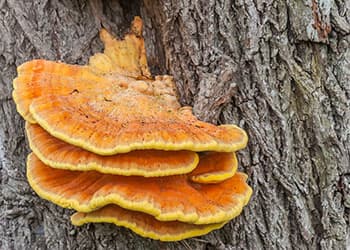 Chicken-of-the-Woods (Laetiporus sulphureus) is fan-shaped to semicircular and it can be smooth to finely wrinkled with a suede-like texture. Chicken-of-woods is a yellow to vibrant orange color with a white spore. Chicken of the Woods mushrooms are cooked by frying, baking, sautéing, and blanching. They are also a popular meat substitute for chicken or tofu. Chicken of the woods can be found in the Southwest region of the U.S.
Chicken-of-the-Woods (Laetiporus sulphureus) is fan-shaped to semicircular and it can be smooth to finely wrinkled with a suede-like texture. Chicken-of-woods is a yellow to vibrant orange color with a white spore. Chicken of the Woods mushrooms are cooked by frying, baking, sautéing, and blanching. They are also a popular meat substitute for chicken or tofu. Chicken of the woods can be found in the Southwest region of the U.S.
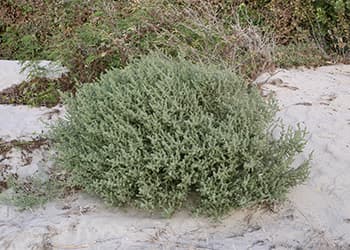 Saltwort (Salsola) A small plant, often forming dense stands of unbranched, upright stems to around 30cm in height. Plants may also be branched and slightly sprawling. The petalless flowers are carried in small whorls at the bases of the linear, blunt-tipped, succulent leaves. Saltwort can be prepared in a number of different ways, including being steamed or fried as a side dish, rolled up in sushi and in soups and stews. Saltwort grows in hardiness zones 8 -10 in the Southeast regions of the U.S.
Saltwort (Salsola) A small plant, often forming dense stands of unbranched, upright stems to around 30cm in height. Plants may also be branched and slightly sprawling. The petalless flowers are carried in small whorls at the bases of the linear, blunt-tipped, succulent leaves. Saltwort can be prepared in a number of different ways, including being steamed or fried as a side dish, rolled up in sushi and in soups and stews. Saltwort grows in hardiness zones 8 -10 in the Southeast regions of the U.S.
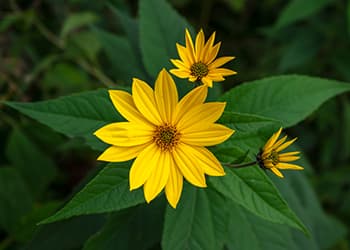 Sunchoke (Helianthus tuberosus) has green to light brown stems with small white hairs. The leaves are oval in shape and bloom vibrant yellow flowers. Sunchokes grow to 2 to 8 feet. Sunchoke root can be eaten raw. The root can be used to replace carrots or potatoes. Sunchokes grow in hardiness zones 3-8 across the U.S.
Sunchoke (Helianthus tuberosus) has green to light brown stems with small white hairs. The leaves are oval in shape and bloom vibrant yellow flowers. Sunchokes grow to 2 to 8 feet. Sunchoke root can be eaten raw. The root can be used to replace carrots or potatoes. Sunchokes grow in hardiness zones 3-8 across the U.S.
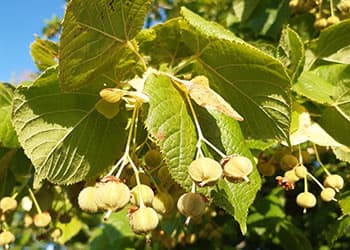 Linden Seeds (Tilia Americana) Linden can be identified by their characteristic rigid light gray bark, huge heart-shaped, dark green leaves, and showy clusters of yellowish flowers. Linden trees also have an identifiable conical, oval crown with densely growing foliage. The seeds are greenish brown. Linden seeds can be eaten roasted or ground into a faux chocolate. Linden trees grow in hardiness zones 3-8 in the Midwest, as well as Northeast regions of the U.S.
Linden Seeds (Tilia Americana) Linden can be identified by their characteristic rigid light gray bark, huge heart-shaped, dark green leaves, and showy clusters of yellowish flowers. Linden trees also have an identifiable conical, oval crown with densely growing foliage. The seeds are greenish brown. Linden seeds can be eaten roasted or ground into a faux chocolate. Linden trees grow in hardiness zones 3-8 in the Midwest, as well as Northeast regions of the U.S.
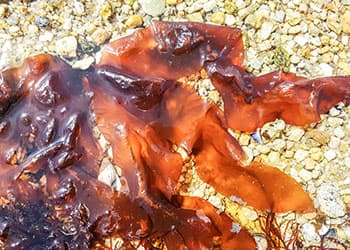 Dulse (Palmaria palmata) is a flat red seaweed that usually looks a rusty purple/brown color. The seaweed is irregularly branched and divided lobes. Some people use dulse as medicine. Dulse is used for high cholesterol and prevention of iodine deficiency. Dulse can be eaten fresh or dried. In traditional dishes, it is boiled with milk and rye flour or made into a relish and is commonly served with fish and butter. Dulse grows along the Northeast coastlines.
Dulse (Palmaria palmata) is a flat red seaweed that usually looks a rusty purple/brown color. The seaweed is irregularly branched and divided lobes. Some people use dulse as medicine. Dulse is used for high cholesterol and prevention of iodine deficiency. Dulse can be eaten fresh or dried. In traditional dishes, it is boiled with milk and rye flour or made into a relish and is commonly served with fish and butter. Dulse grows along the Northeast coastlines.
While all of these are located in America, we don’t want to leave our overseas readers out of the loop. Countries like Canada and Australia are also abundant with delicious plants.
Canada’s weather aligns more with the United States and many of the plants above can grow in Canada’s ecosystem. Canadians can use the hardiness zones to apply to their regions.
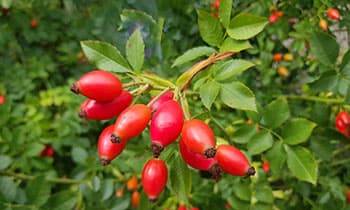
Rose Hips (Rosa canina) are the fruit of any rosebush. All Rose hips are edible; they can vary in color from vibrant red or orange to purple or black. Rose hips make great jellies, sauces, syrups, soups and seasoning, and even fruit leather. Rose Hips grow in hardiness zones 3-9.
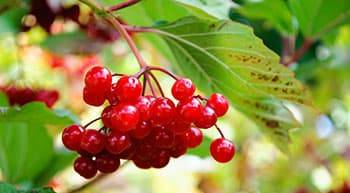
Wild Cranberries (Viburnum trilobum) grow low to the ground, like a small vine. The berries are easy to identify. They are oval in shape, whitish-green when unripe and deep red when ripe. They can be used in jelly, pie, and medicine. The medicine treats cramps and muscle pains in a tincture. Cranberries grow in hardiness zones 4-7.
⇒ Edible Plants That Grow in Your State (Video)
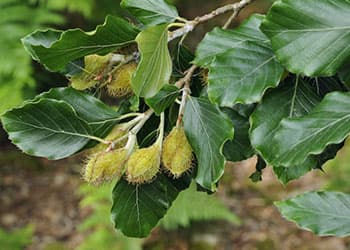 Beech nuts (Fagus sylvatica) grow on beech trees. The bark of the beech is smooth and gray. The signature beechnut fruit is brown, triangular-shaped nuts covered in spines They can be used in a similar way to pine nuts, sprinkled on salads and risottos. They can be eaten raw, or roasted in the oven and then rubbed between two tea towels to remove the shells before eating. The beech grows in hardiness zones 4-8.
Beech nuts (Fagus sylvatica) grow on beech trees. The bark of the beech is smooth and gray. The signature beechnut fruit is brown, triangular-shaped nuts covered in spines They can be used in a similar way to pine nuts, sprinkled on salads and risottos. They can be eaten raw, or roasted in the oven and then rubbed between two tea towels to remove the shells before eating. The beech grows in hardiness zones 4-8.
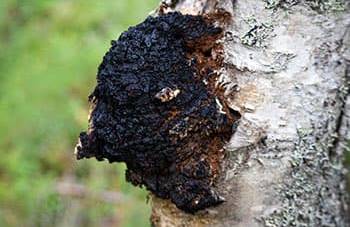 Chaga Mushroom (Inonotus obliquus) looks like a burl on a tree; the interior is a bright orange color that has a cork-like texture. Packed with antioxidants, chaga mushroom can be made into tea or a tincture. Its extract may improve immunity, chronic inflammation, blood sugar and cholesterol levels.
Chaga Mushroom (Inonotus obliquus) looks like a burl on a tree; the interior is a bright orange color that has a cork-like texture. Packed with antioxidants, chaga mushroom can be made into tea or a tincture. Its extract may improve immunity, chronic inflammation, blood sugar and cholesterol levels.
Australia lies in Plant Hardiness Zones 7 through 12 with some variations across regions and seasons. The caveat with foraging in Australia is that it’s completely illegal without a permit except private properties in some places. Without the 104$ permit you can be fined anywhere from 10,000 to 110,000 dollars depending on where you foraged. If you have a license or are on your own land you can forage freely.
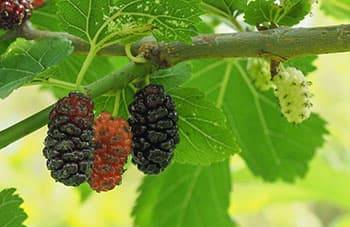 Mulberries (Morus alba) look a bit like a large blackberry or loganberry. These “berries” are really drupes, consisting of a cluster of tiny fruits, each with a seed. Starts green, then turns pink and dark purple when ripe. Mulberries can be eaten or made into pies, jams and many other sweets. Mulberries grow in hardiness zones 5-10.
Mulberries (Morus alba) look a bit like a large blackberry or loganberry. These “berries” are really drupes, consisting of a cluster of tiny fruits, each with a seed. Starts green, then turns pink and dark purple when ripe. Mulberries can be eaten or made into pies, jams and many other sweets. Mulberries grow in hardiness zones 5-10.
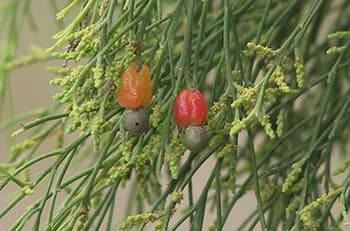
Native Cherry (Exocarpos cupressiformis) is a small tree with vibrant green leaves. The actual fruit of native cherry is not the red egg-shaped structure , but the very hard nut situated at its apex. The fruit can be eaten raw and the native peoples of Australia used it to treat snake bites. Native Cherry trees grow in hardiness zones 9-11.
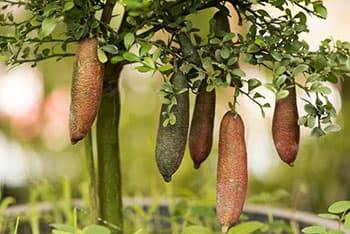
Finger Lime (Citrus australasica) are shaped like small pickles or cucumbers with ends that taper to points. Finger limes are most commonly a purple or blackish dark green, though they sometimes appear as light green or even brownish-red. Finger limes can be used in the same way that regular limes are. Whether it’s to brighten the flavor of a savory dish or to make pies more flavorful. Finger Limes grow in hardiness zones 8-11.
November is filled with wonderful plants and fungus that you can show off this Thanksgiving. The best part about foraging is that you can enjoy a delicious meal while knowing exactly where it came from.
What do you all plan to do with your November foraging finds?
You may also like: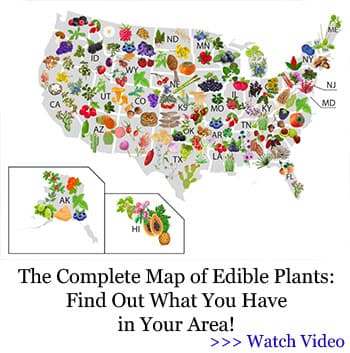
How to Tell the Difference Between Yarrow and the Poisonous Hemlock
Where to Forage for Free in Your City (Video)
This Once-Banned Berry Helps People With Diabetes
People Weed Out These Plants, But Here’s What You Should Do Instead








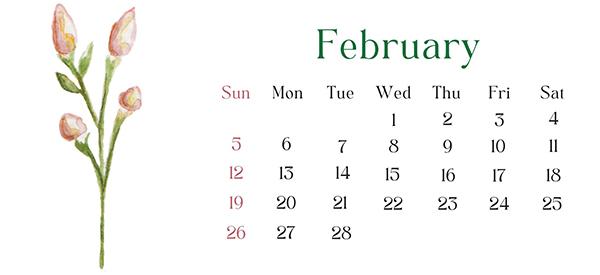
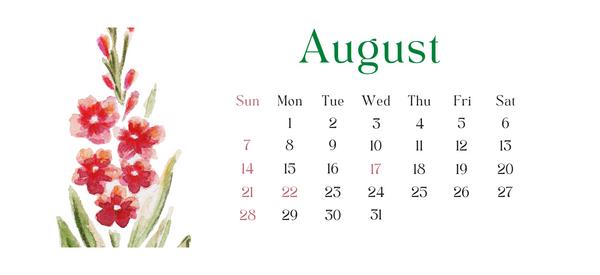
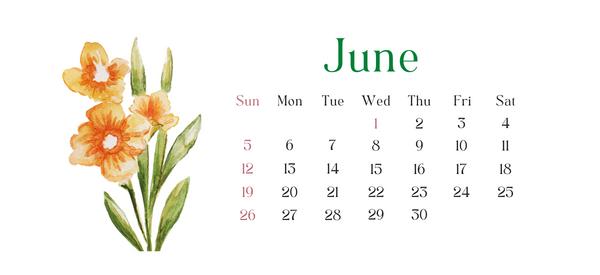
Wild Apples are all over the North East, USA. Grapes too.
I have a Bur Oak in Arkansas that drops strange hairy acorns. I have been told they are poisonous to eat. Is that true or not?
Hello Judy,
Native Americans used Bur Oak acorns both as food and herbal medicine. To eat them, they can be roasted or boiled. However, raw acorns contain tannins which can be toxic to humans and animals.
Many blessings and good health!
Chicken of the Woods are also in NorthEast Ohio. I usually find one or two each fall.
Regarding Lemon Bacopa (Bacopa caroliniana), is this an aquatic plant? Will they grow in non marshy areas? And lastly do you have a suggestion as to where the one u are specifically referring can be purchased?
Hello Robbin,
Lemon bacopa is herbaceous aquatic perennial plant that grows along shorelines, and in water less than 3 feet deep. You can find this plant online on Amazon, Etsy, and many health stores. It is best to use Google to find one that delivers to your area.
Many blessings and good health!
I would like to know if there is anyone in my area ethel, la that could come and help me identify what wild plants are growing on my 22 acres.
Is there somewhere I could call or reach out to to find a forager I could hire to help me….?
I can’t help directly, but I know (at)thewanderschool on Instagram does these types of foraging walks on people’s property. She lives in North Carolina so probably too far away, but perhaps you could reach out to her in case she knows other experts in your area? The website is thewanderschool(dot)com if you don’t use Instagram. Best of luck!
Have you tried the iNaturalist App? It helps identify plants, trees, animals etc…
Morus alba is white mulberry, native to Asia and what silkworms feed on. They can be found on other continents where people planted them, probably including Australia. However, the picture shows what looks like a red mulberry (Morus rubra). Both are edible as are all mulberry species, but it seems like red mulberries aren’t even found in Australia. This may confuse readers who are looking for a plant that looks like the picture. Please try to make sure the picture is of the right species especially when there’s a big difference like berry color. (Red mulberry is native to eastern North America so US and Canadian foragers can look for it in early summer when it fruits.) I know because I’ve foraged both species before.
Sorry for another comment, but since I see this on every monthly “what to forage this month” article I have to ask WHEN WILL THE PEOPLE OF AUSTRALIA FIGHT FOR THEIR RIGHT TO FREE FORAGING??? I don’t live there and can’t believe an ordinary person must pay $104 just to gather some wild plants (including invasive weeds presumably) anywhere not on their own property. This is restricting foraging to the rich when it’s the poor who have the most to gain from gathering free food. Does this rule apply to indigenous Australians too? People who gathered on the land for millennia? What an outrage! Australian foragers, please consider starting a petition to your government to change this horrible rule. At least make the permit affordable or make invasive weed gathering free.
I’m so grateful for the monthly foraging calendar. It would be great if this could be put into a book format for the entire year. Thank you for all the work that goes into this!
I’m very interested in learning more about the plants, foraging and recognizing them. On the map of edible plants I don’t seem to see Puerto Rico which is a Commonwealth of the US. I was born there and am in FL now but with plans to move back in 2023. we have a lot of Sea Grapes along the coast they are delicious.